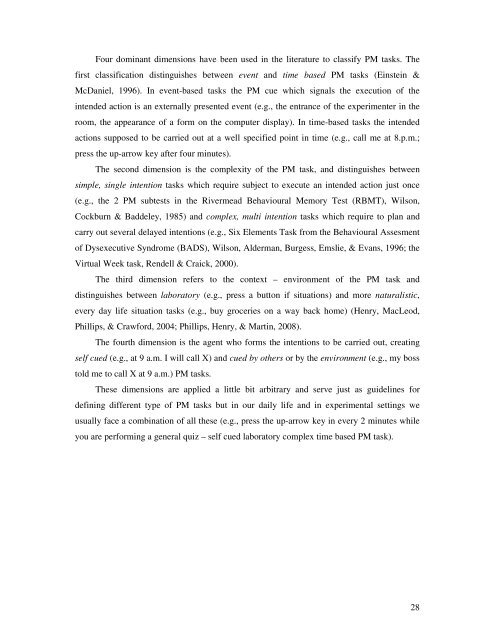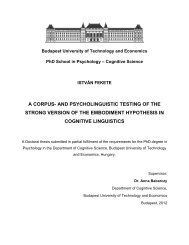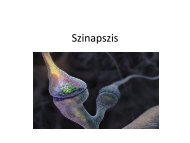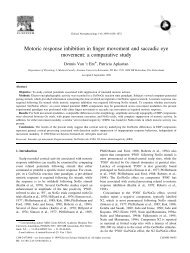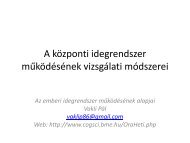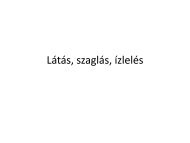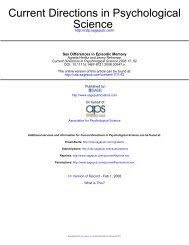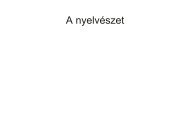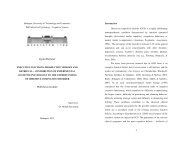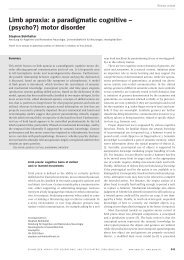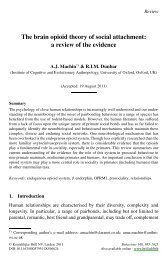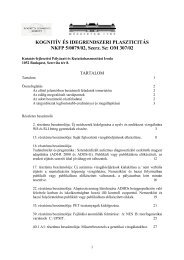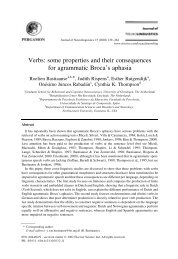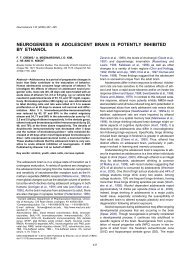Gyula Demeter
Gyula Demeter
Gyula Demeter
You also want an ePaper? Increase the reach of your titles
YUMPU automatically turns print PDFs into web optimized ePapers that Google loves.
Four dominant dimensions have been used in the literature to classify PM tasks. The<br />
first classification distinguishes between event and time based PM tasks (Einstein &<br />
McDaniel, 1996). In event-based tasks the PM cue which signals the execution of the<br />
intended action is an externally presented event (e.g., the entrance of the experimenter in the<br />
room, the appearance of a form on the computer display). In time-based tasks the intended<br />
actions supposed to be carried out at a well specified point in time (e.g., call me at 8.p.m.;<br />
press the up-arrow key after four minutes).<br />
The second dimension is the complexity of the PM task, and distinguishes between<br />
simple, single intention tasks which require subject to execute an intended action just once<br />
(e.g., the 2 PM subtests in the Rivermead Behavioural Memory Test (RBMT), Wilson,<br />
Cockburn & Baddeley, 1985) and complex, multi intention tasks which require to plan and<br />
carry out several delayed intentions (e.g., Six Elements Task from the Behavioural Assesment<br />
of Dysexecutive Syndrome (BADS), Wilson, Alderman, Burgess, Emslie, & Evans, 1996; the<br />
Virtual Week task, Rendell & Craick, 2000).<br />
The third dimension refers to the context – environment of the PM task and<br />
distinguishes between laboratory (e.g., press a button if situations) and more naturalistic,<br />
every day life situation tasks (e.g., buy groceries on a way back home) (Henry, MacLeod,<br />
Phillips, & Crawford, 2004; Phillips, Henry, & Martin, 2008).<br />
The fourth dimension is the agent who forms the intentions to be carried out, creating<br />
self cued (e.g., at 9 a.m. I will call X) and cued by others or by the environment (e.g., my boss<br />
told me to call X at 9 a.m.) PM tasks.<br />
These dimensions are applied a little bit arbitrary and serve just as guidelines for<br />
defining different type of PM tasks but in our daily life and in experimental settings we<br />
usually face a combination of all these (e.g., press the up-arrow key in every 2 minutes while<br />
you are performing a general quiz – self cued laboratory complex time based PM task).<br />
28


